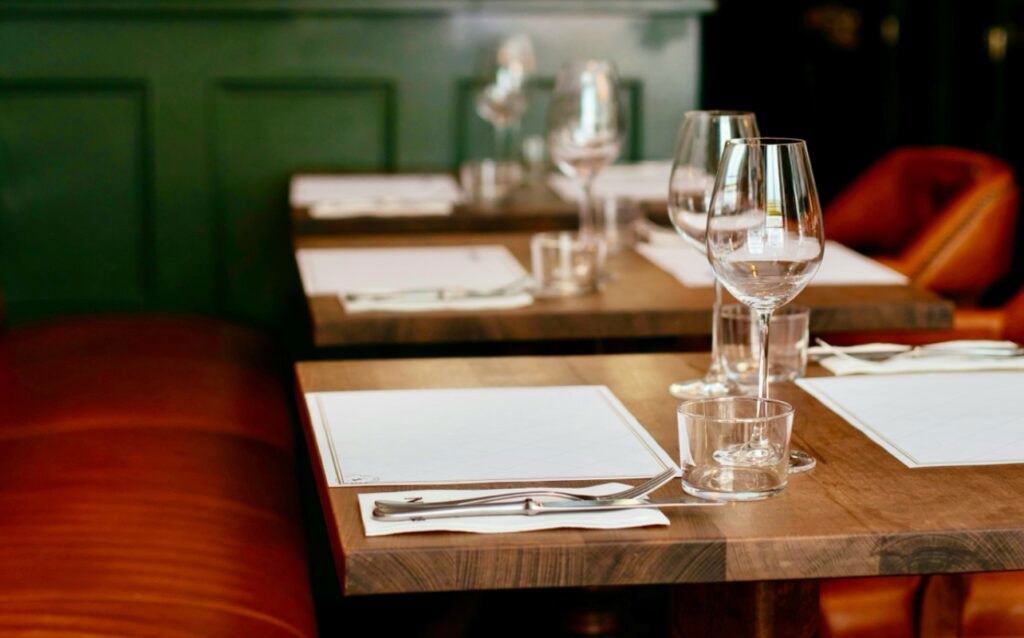Food Truck vs. Brick-and-Mortar: Which Restaurant Model Works Best?
Whether you’re pulling up curbside with a food truck or locking in the keys to your first storefront, the question stays the same: what model sets you up to win your way?

Black food entrepreneurs have always done more with less: flipping recipes, reclaiming space, and serving culture one plate at a time. Whether you’re pulling up curbside with a food truck or locking in the keys to your first storefront, the question stays the same: what model sets you up to win your way?
As Chef Erick Williams of Virtue says, “This work is not just about feeding people; it’s about feeding purpose.” That purpose shows up in how you build your kitchen, how you scale your business, and even what kind of deep fryer or commercial dishwasher you trust to keep up with demand.
Here, we will help you weigh both options, stay grounded in your goals, and build something that lasts.
Food Truck Business

For many Black chefs and food creators, the mobile food truck is where the vision starts. It’s more than a business; it’s mobility, creativity, and community all rolled into one. Just look at Trap Kitchen: two friends, one idea, and now a brand that moves through cities feeding the culture.
So what’s it really like running mobile food businesses? Here’s the real breakdown: what works, and what’ll test your patience.
 Lower Start-up Costs
Lower Start-up Costs
Food trucks cost way less to launch than a sit-down spot, especially if you’re buying used or leasing. The average food truck costs $50K to $200K, depending on setup, gear, and permits. That lower barrier makes it real for folks without deep pockets to still build something powerful.
 Mobility
Mobility
You can pull up where the people are: festivals, breweries, neighborhoods, and campuses. That flexibility lets you chase foot traffic, follow events, and stay visible. In the mobile food industry, being able to move with the moment is major.
 Market Testing
Market Testing
Food trucks let you test recipes, pricing, and branding without the overhead. You get instant feedback from real customers, not focus groups. Going into the food truck industry is one of the smartest ways to build your brand before going bigger.
But it’s not all smooth streets and sold-out weekends. There are some real challenges that come with running a food truck, too.
 Limited Space
Limited Space
Working in a mobile food truck is tight; think fast moves, hot grills, and nowhere to stretch out. Storage is minimal, and prep gets creative real quick. If you’re used to working in a full commercial kitchen or simply not organized, the pressure builds fast.
 Weather Dependency
Weather Dependency
Rain, snow, or extreme heat can crush your sales days. If you don’t have catering or indoor contracts to fall back on, you’re at the mercy of the forecast. Seasonal slumps are real in the food truck industry.
 Permitting Challenges
Permitting Challenges
You’ll need health permits, business licenses, parking approvals, food handler certifications, and more. Rules vary by city and change often. Some places are food truck–friendly, while others require you to jump through hoops. For Black entrepreneurs, navigating that red tape without inside connections can take time, patience, and a thick skin.
Brick and Mortar Restaurant

Opening a traditional brick spot is a whole different kind of play (there’s food, space, presence, and a clear restaurant concept rooted in culture and community). For some restaurant owners, this is the dream: your name on the door, your story on the walls. Take The Busy Bee Cafe in Atlanta, for example, a legacy restaurant that’s been serving soul food and history since 1947, showing how a neighborhood spot can become a cultural institution.
Let’s break down the real wins and real work that come with running a full-service, traditional restaurant.
 Established Presence
Established Presence
A physical location signals stability and staying power; it says you’re here to build, not just hustle. People remember where they sat, who they came with, and how your place made them feel. That kind of rooted presence is why established restaurants often become cultural landmarks.
 Greater Revenue Potential
Greater Revenue Potential
With more seating, longer hours, and liquor sales, brick-and-mortar can bring in bigger numbers. You’re not limited by how many meals fit in a food truck window or which menu items travel well. If the business plan is tight and demand is strong, the ceiling is much higher.
 Enhanced Experience
Enhanced Experience
In your own space, you control everything: ambience, plating, music, scent, story. It’s not just a meal; it’s the full vibe. That freedom to shape the guest experience doesn’t exist outside a traditional restaurant setting.
Of course, for all the benefits, a brick-and-mortar restaurant grind comes with its own set of struggles you’ll want to be ready for.
 High Startup & Operating Costs
High Startup & Operating Costs
Rent, utilities, cooking equipment, and payroll; restaurant costs stack up fast. You’re looking at six figures minimum before the first plate even drops. And once you’re open, operational expenses stay high month after month.
 Longer Setup Time
Longer Setup Time
Finding the right space, passing inspections, and buying gear all take time. You can’t flip the switch and open on a weekend. Especially if you’re dealing with permits, contractors, or expensive real estate, expect months of planning before you serve your first guest.
 Higher Risk
Higher Risk
If business slows down, those fixed costs don’t wait. A bad month can hit harder when a significant portion of your income is tied to rent, payroll, and utilities. That’s why funding, consistency, and a sharp eye on your margins are non-negotiable in this game.
The Best of Both Hustles

A hybrid restaurant model blends a food truck with a brick-and-mortar space. Some folks start mobile to build buzz and test their cuisine, then open a traditional location when the brand is strong. Others run both at once, using the truck to hit different locations and attract new customers, while the storefront offers consistency and a neighborhood base.
This approach has range. You get the mobility of a truck, the stability of a restaurant, and more ways to drive revenue, especially if you’re sharp with social media marketing. But it also demands more: more essential equipment, a commercial kitchen that can handle scale, tighter systems, more time, and a bigger initial investment, especially if you’re funding growth out of your own life savings.
One business that’s made this model work is World Famous House of Mac in Miami. Chef Teach started with a food truck serving soulful comfort food, then expanded into brick-and-mortar while still tapping into mobile events and pop-ups. His hybrid model proves that growing at a moderate rate, with smart risks and strong branding, can turn a small setup into a serious player in fast food restaurant sales.
This path isn’t for everyone, but if you’re feeling the stretch, it might be time to move. You might be ready for the hybrid model if:
- You’ve maxed out your food truck’s potential and need more space to grow.
- Customers keep asking where they can find you every day, rain or shine.
- You’ve built a loyal following that shows up consistently.
- Your team is strong, and you’re confident delegating.
- Your systems, inventory, prep, and finances can scale with growth.
- You’re ready for longevity, not just mobility.
- You’ve got a clear vision, and the grind to match it.
Real Talk Before You Decide
Whether you’re rolling with a food truck, opening a storefront, or juggling both, the key is knowing what works for your grind. Don’t let hype rush your moves; build with intention, protect your margins, and use tools like restaurant software to track costs, staff, and sales from the jump. This game is tough, but when it’s rooted in purpose, community, and smart systems, it can feed more than just plates.
RELATED CONTENT: Do Better: Patrons Skip Out On $200 Bill, ‘Dine-and-Dash’ Fails Black-Owned Restaurants












